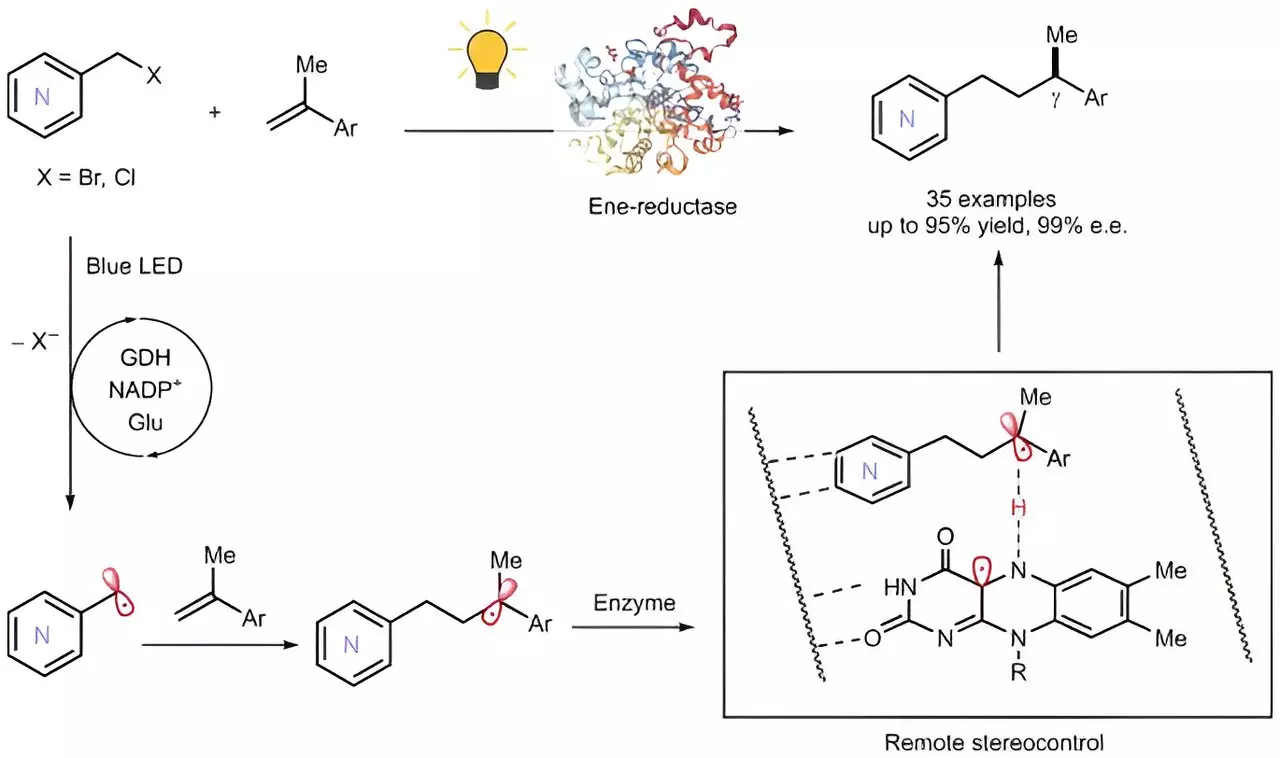The world of molecular chemistry has taken a significant leap forward, thanks to the pioneering researchers at the Center for Advanced Bioenergy and Bioproducts Innovation (CABBI). Their groundbreaking work in modifying azaarenes, essential molecular puzzle pieces found in everyday products, has opened doors to new chemical reactions and sustainable energy solutions. By utilizing photoenzymatic systems, researchers have found a way to harness the power of light and unlock novel possibilities in molecular structure assembly and repair.
Despite their seemingly minuscule size, azaarenes play a monumental role in the realm of chemistry. These unique molecules serve as the building blocks for a wide range of compounds, even influencing the DNA within our cells. However, manipulating these molecules has always posed a challenge. The CABBI team, led by Huimin Zhao and Maolin Li, overcame this obstacle by developing an ene-reductase system. This specialized molecular toolkit, incorporating the ene-reductase enzyme, allows for intricate modifications of azaarenes without causing collateral damage.
One remarkable achievement of the team’s work is the mastery of enantioselective hydrogen atom transfer. Many molecules exist in left- and right-handed versions, known as enantiomers. The team’s method enables them to selectively target and adjust either version with unparalleled precision. Furthermore, through remote stereo control, they can make these precise adjustments from a distance. This breakthrough is particularly significant for the bioenergy sector, as it opens up new possibilities for producing biofuels and bioproducts in a more efficient and sustainable manner.
The study conducted by the CABBI team not only expands the range of chemical reactions and bioproducts that can be efficiently made but also introduces the concept of asymmetric photocatalysis. This revolutionary technique ensures consistency in reactions and holds promise for the production of biofuels and bioproducts derived from a wider array of biomass feedstocks. These advancements align perfectly with CABBI’s goals and the Department of Energy’s mission to advance sustainable energy and product solutions.
The implications of the team’s research extend far beyond the laboratory. Real-world applications abound, from driving sustainable energy initiatives to developing safer agricultural chemicals. Advancements in bioenergy and bioproducts can spur economic growth, creating new industries, jobs, and consumer products. Additionally, these sustainable production methods can reduce pollution and environmental degradation, leading to cleaner air and water for communities.
In a world grappling with environmental challenges and the urgent need for sustainable solutions, discoveries like those made by the CABBI team serve as beacons of hope. By uncovering the intricacies of azaarenes and harnessing the potential of remote stereo control, these researchers are paving the way for a future characterized by sustainable energy and innovation. The journey ahead is filled with excitement and the promise of further breakthroughs that will shape our world for the better. As Maolin Li, a postdoctoral researcher on the project, eloquently stated, “This research isn’t just about the nuances of chemical reactions; it’s about the future of sustainable energy and more. I’m excited to see where this journey takes us next.”


Leave a Reply